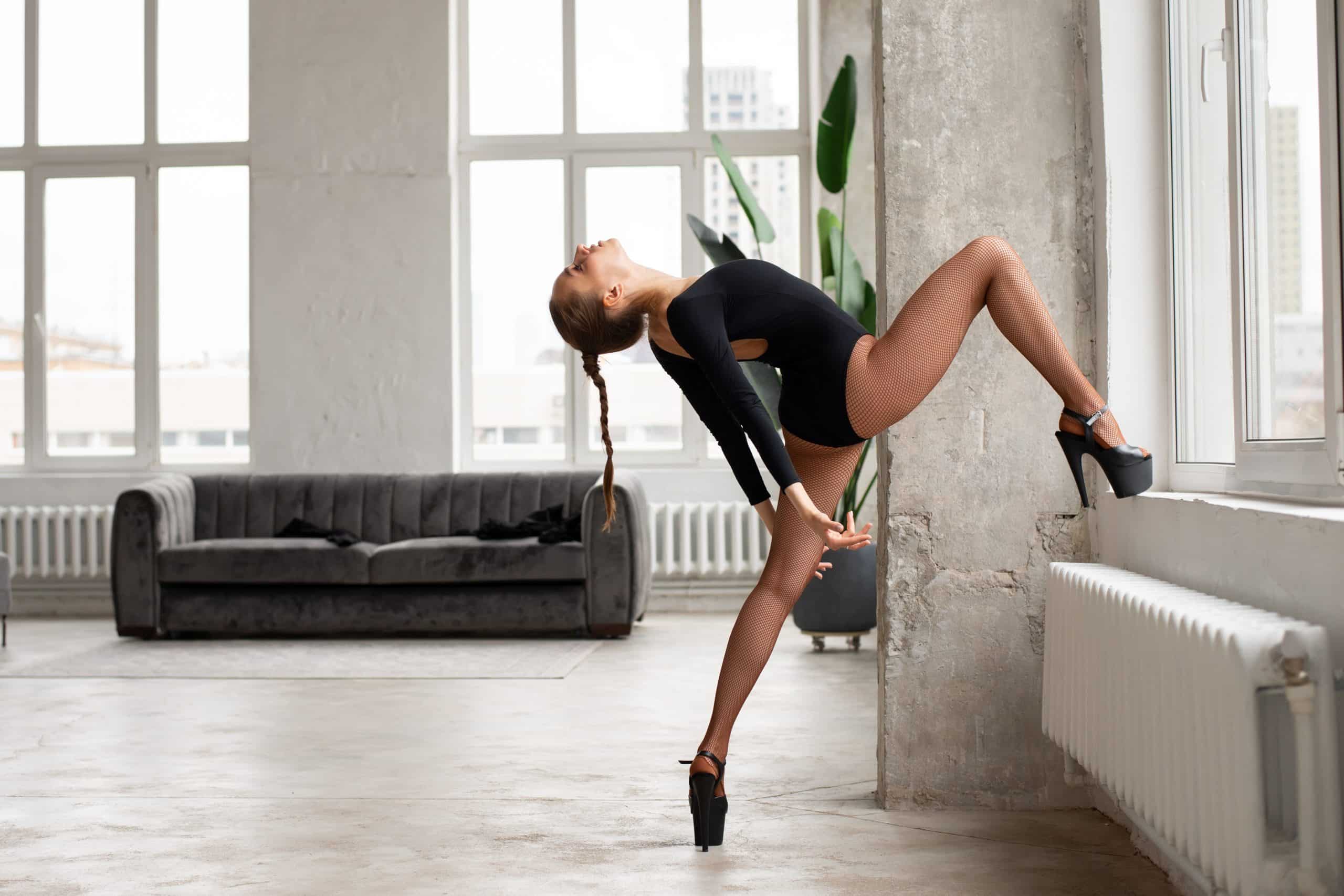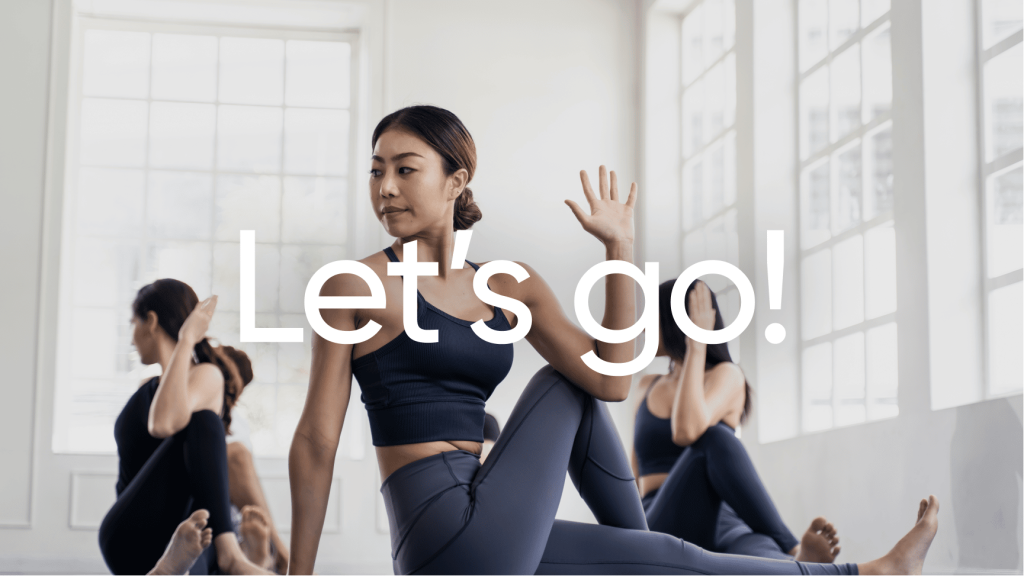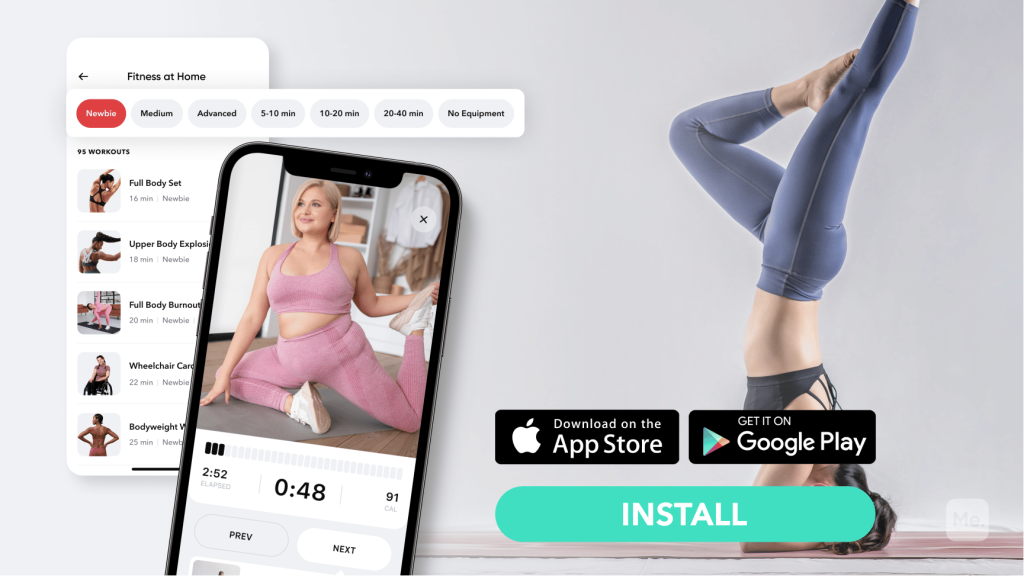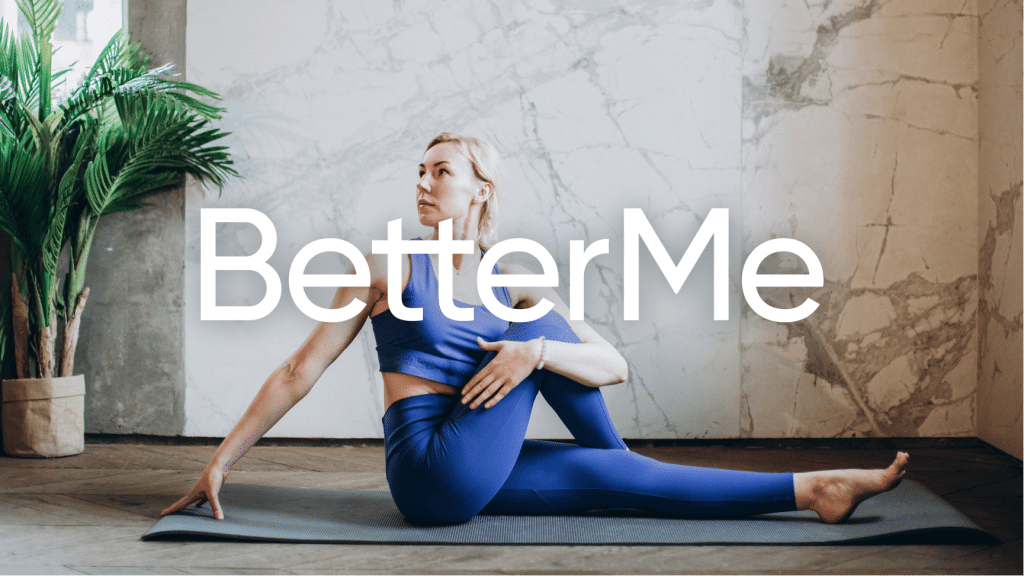Dancing is an established form of exercise and a great way to stay fit. Like other cardiovascular activities, it can promote a healthy lifestyle and help you stay in shape (4). Dancing in heels amplifies the experience in many ways. From adding complexity to your moves to helping you create a bold statement, staying fit with heels can be fun and beneficial. But before you sign up for a heels dance class, you should know that no one is truly safe from injury. Even if you’ve been walking in heels for a while, the elevation and extra weight can put a strain on your feet and ankles when you dance in those shoes. To keep yourself safe, be sure to follow the tips in this article. And in typical BetterMe fashion, we’re giving you all the info you need to get started with heels dance for beginners.
Get your personalized
meal plan!
Is Heels Dance Class A Good Idea?
Yes! Heels dance classes can be incredibly beneficial for those looking to stay fit and wanting to add a bit of edge to their repertoire. With the right pair of heels and the correct technique, you can enjoy a variety of benefits from your dancing:
Get In More Cardio
Cardiovascular exercise is at the core of every form of dance, and you can get a great workout by dancing in heels. When you dance in heels, several things happen in your body that over time may translate to improved cardiovascular health.
First, your heart rate is more likely to increase and stay elevated.
Second, your breathing will become deeper as your body works harder to keep up with the movements you’re performing. This process strengthens your heart and lungs and helps you burn more calories. Consequently you’re less likely to suffer from heart ailments (5) (6).
Build Core Strength & Balance
Balancing on your toes and pivoting require extra strength in the core. By dancing in heels, you’ll be forced to engage your core muscles more than ever before. As a result, your core will become stronger, and you’ll be able to move with more confidence.
Not only that; a strong core is a precursor to having the perfect posture. And it doesn’t hurt that core strength is necessary for simple, everyday activities like lifting and carrying groceries (1).
Improve Coordination & Agility
If you thought agility (aka how quickly you can react and move) was only important for athletes – think again.
Dancing in heels requires a lot of speed and agility, which will train your body to respond quickly and accurately. This is especially helpful if you’re looking to compete in dance battles or on a professional stage.
For the average Joe or Jane, it’ll help you move better and more efficiently. Being more coordinated and agile will also help you stay safe and avoid unnecessary trips and falls (11).
Read More: The Best Clothes For Hip Hop Dance
Increase Calorie Burn
Looking to shed a few pounds? High-intensity heels dancing burns a ton of calories, which can help you reach your health and fitness goals in no time (12) (13).
Many beginner classes will teach you simple moves and then transition to more complex steps. This helps you stay on your toes, so your body works harder – and burns more calories.
Enjoy Exercise
How much you enjoy exercise determines how motivated you are to keep it up. And when it comes to dancing in heels, the experience is sure to be a pleasant one.
A typical heels dance class involves some type of music. Music can significantly improve the experience. And there’s mental and emotional benefits of music (10).
In addition, you’ll be able to show off your moves and proudly display your body confidence in a way that’s both exhilarating and fun.
Learn A New Skill
Heels dance classes not only help you stay fit and healthy, but also teach you a unique skill. And mastering the art of heels dancing can open up new opportunities – like competing in dance battles or joining a professional team.
Think about it this way: at the end of your heels dance class you’ll not only have improved your physical and mental wellbeing, but also gained new dance skills that you can monetize and use in other settings.
Should You Dance In Heels?
Heels dance is beneficial, but is it the right choice for you? That depends on your current fitness goals, skill level, and what type of dancing you’re looking to do. Go ahead and sign up for that dance class if you:
- Have a basic level of fitness, coordination and balance: you don’t need to be a pro to join a heels dance class.
- Are looking to get and stay in shape: as we mentioned, dancing in heels is an excellent way to burn calories, increase cardiovascular health, and strengthen your core.
- Are looking to learn a new skill: it takes time and practice to master any type of dance. Heels dance is no different.
- Are looking for a fun way to exercise: if you’re tired of the same old workout routine, this could be a great way to mix things up.
Conversely, you may want to check in with your doctor before attempting heels dance if you:
- Have a lower extremity injury such as a knee, hip or ankle issue.
- Have any medical condition that could be negatively impacted by this type of exercise (such as a heart condition, circulation issues, etc.).
- Are pregnant.
- Are overweight or obese and have not been cleared by a doctor to do high-impact activities.
If you struggle to even flirt with the idea of giving up your favorite foods or working out till your legs give way – BetterMe app is here to breathe a fresh perspective into the way you view the weight loss process! Check out the app and experience the fun side of fitness and dieting with BetterMe!
How To Prepare For Your First Heels Dance Class?
Now that you know the benefits, it’s time to get your body and mind ready for a heels dance class. Here are some tips to help you prepare:
Stretch Consistently To Build Muscle Flexibility
Pliable muscles are essential for dancing in heels. Why, you ask? Dancing in heels requires a lot of foot and ankle movement. So, it’s important to make sure you have the right flexibility and range of motion.
What many people don’t realize is for stretching to have the desired effect, you must do it consistently, not just for a few minutes before and after each class. Set aside entire days to focus on stretching and conditioning your body.
Here are some tips for effective stretching:
- Start your stretches slowly and gently.
- Stretch both sides of the body evenly, even if one leg is more flexible than the other.
- Use a foam roller or stretching strap to help you achieve the desired range of motion.
- Hold each stretch for at least 30 seconds.
- Do not force the body into any positions that cause pain or discomfort.
Here are some of the best stretches to prepare your body for heels dance:
1. Cobra Pose
This yoga-inspired stretch is great for warming up your spine, shoulders, and chest muscles. It also helps to open up the hips and quads. To do this stretch:
- Lay down on your stomach and rest your palms flat on the ground near your chest.
- Push up through your arms slowly, arching your back and lifting your chest off the floor.
- Hold for a few seconds, then release.
- Repeat 5 times.
2. Kneeling Lunge
This lower-body stretch is perfect for getting your legs and hips ready for dancing in heels. To do this stretch:
- Start on your knees, with one leg bent and the other extended out in front of you.
- Push your hips forward to deepen the stretch.
- Hold for a few seconds, then switch legs.
- Repeat 5 times on each side.
3. Foot Intrinsic Strengthening
Strengthening your feet is essential for dancing in heels. Here are some exercises to help you get started:
- Roll a small ball or can under the arch of your foot for 30 seconds.
- Pick up and hold marbles with your toes for 30 seconds.
- Do calf raises by standing on a step, then raising and lowering your heels for 30 seconds.
- Do ankle circles by rotating your ankle in a clockwise direction 10 times, then switch directions.
- Do ankle pumps by flexing and pointing your foot for 30 seconds.
4. Calf Wall Stretch
This stretch helps to strengthen and lengthen your calf muscles, which is important in heels dance. To do this stretch:
- Stand facing a wall, with one foot slightly back.
- Press your toes and the ball of your foot into the wall while keeping your heel on the ground.
- Hold for 30-60 seconds, then switch legs.
- Repeat 3 times on each side.
5. Hip Mobility Exercises
Heels dance requires a lot of hip movement, so it’s important to make sure your hips are loose and mobile. Here are some exercises to help you do just that:
- Lunges with hip circles – Start in a lunge position and rotate your hips in a circular motion 10 times, then switch sides.
- Hip thrusts – Lie on your back with both feet flat on the floor. Lift your hips up, then lower them back down slowly. Repeat 10 times.
- Side-lying leg lifts – Lie on one side and lift the top leg up 10 times, then switch sides.
- Fire hydrants – Position yourself on your hands and knees, then lift one leg up and out to the side. Hold for 30 seconds, then switch sides.
Read More: How To Choose Heels For Dance (Beginner, Intermediate, And Advanced)
Cross Train To Maintain Muscle Strength
Heels dance is primarily about foot and ankle movements, which means you need to have enough strength in those areas. You also need a fair amount of core strength to execute movements and maintain your balance.
Cross training is a great way to build up the necessary muscles to help you stay safe and confident while dancing in heels (2). Cross training can include activities such as running, swimming, and strength training.
Strength training is a particularly effective way of building up these muscles (9).
You can do body weight exercises such as squats, lunges and push-ups to help you build your strength. If you have access to weights or resistance bands, you can also incorporate these into your strength training routine.
Choose The Right Pair Of Heels
The shoes you wear to heels dance class can make or break your experience. Make sure you choose a pair that fits your feet well and provides enough support for long-term wear.
Look for heels that have:
- A supportive design – coverage around the back of your foot, a wide toe box, and an ankle strap
- A sturdy heel – no more than 2.5 inches in height
- A padded insole – to provide cushioning and support
- Proper grip – to prevent slipping on the dance floor
- Breathable material – to help keep your feet cool and dry
- The right fit – make sure you try them on before purchasing!
Choose The Right Sportswear
As with any sport, you want to make sure that you are wearing the right clothing while you are dancing in heels. You want sportswear that guarantees comfort—avoid clothing that is too tight or restrictive.
Look for fabric that will allow your skin to breathe, such as lightweight cotton, breathable mesh and spandex. Avoid cotton T-shirts, as they can become heavy with sweat and start to sag. Choose instead a tank top or sports bra that is lightweight and breathable (7).
For those who prefer all-in-one options, a form-fitting dance bodysuit or a sleek performance jumpsuit can be excellent choices. Both provide a streamlined silhouette that stays in place during spins, floorwork, and sharp transitions. They can also help instructors see your alignment clearly while giving you full freedom of movement.
Also, make sure you wear clothing that won’t get in the way of your movements. Look for shorts or leggings that fit closely to your body but still allow a full range of motion.
We recommend one of these BetterMe Matching Sets because (8):
- They’re made of a blend of spandex and nylon, which is lightweight and breathable
- They have an elasticated waistband for a secure fit
- The shorts and leggings have a four-way stretch that allows for easy movement
- The sports bras provide proper coverage and support
- The fabric is moisture-wicking and quick-drying
- They come in multiple colors and styles, so you can express yourself through your dancewear
Whether you’re a workout beast or just a beginner making your first foray into the world of fitness and dieting – BetterMe has a lot to offer to both newbies and experts! Install the app and experience the versatility first-hand!
Tips For Safely Dancing In Heels
The safety of heels dance is just as important as the fun. Make sure you follow these tips when dancing in heels:
- Start slow and take your time – as with any new activity, it takes time to get used to dancing in heels. Take it one step at a time and start with basic movements.
- Stretch before you dance – Stretching can help reduce the risk of injury by loosening tight muscles (3).
- Focus on your form – Make sure you are keeping proper posture and executing each movement correctly to avoid pain or injury.
- Listen to your body – If something doesn’t feel right, stop and take a break. Never push yourself too hard and always practice safety first.
- Work with a professional trainer – If you are just starting out or want to build your confidence, consider taking classes with a professional trainer. They can give you personalized advice and help you hone your technique.
The Bottom Line
Beginners may feel intimidated when they first try dancing in heels, but the right combination of strength training, the right shoes, and sportswear can help make it a fun and rewarding experience. Remember to listen to your body and always practice safety first.
DISCLAIMER:
This article is intended for general informational purposes only and does not serve to address individual circumstances. It is not a substitute for professional advice or help and should not be relied on for making any kind of decision-making. Any action taken as a direct or indirect result of the information in this article is entirely at your own risk and is your sole responsibility.
BetterMe, its content staff, and its medical advisors accept no responsibility for inaccuracies, errors, misstatements, inconsistencies, or omissions and specifically disclaim any liability, loss or risk, personal, professional or otherwise, which may be incurred as a consequence, directly or indirectly, of the use and/or application of any content.
You should always seek the advice of your physician or other qualified health provider with any questions you may have regarding a medical condition or your specific situation. Never disregard professional medical advice or delay seeking it because of BetterMe content. If you suspect or think you may have a medical emergency, call your doctor.
SOURCES:
- Core Stability Training for Injury Prevention (2013, ncbi.nlm.nih.gov)
- Cross Training – OrthoInfo – AAOS (2020, orthoinfo.aaos.org)
- CURRENT CONCEPTS IN MUSCLE STRETCHING FOR EXERCISE AND REHABILITATION (2022, ncbi.nlm.nih.gov)
- Dance for Health: An intergenerational program to increase access to physical activity (2017, ncbi.nlm.nih.gov)
- Effects of Exercise to Improve Cardiovascular Health (2019, frontiersin.org)
- Exercise and Lung Health (2022, lung.org)
- Functional Textile for Active Wear Clothing (2021, intechopen.com)
- Matching Sets (n.d., store.betterme.world)
- Maximizing Muscle Hypertrophy: A Systematic Review of Advanced Resistance Training Techniques and Methods (2019, mdpi.com)
- Music, mental health, and immunity (2021, sciencedirect.com)
- Physical activity programs for balance and fall prevention in elderly (2019, journals.lww.com)
- Salsa dance and Zumba fitness: Acute responses during community-based classes (2016, sciencedirect.com)
- The Effectiveness of Dance Interventions on Physical Health Outcomes Compared to Other Forms of Physical Activity: A Systematic Review and Meta-Analysis (2018, pubmed.ncbi.nlm.nih.gov)











